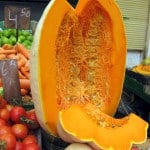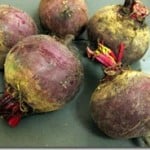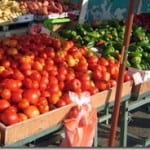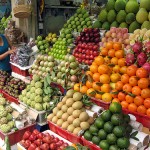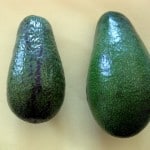I’ve started listening to podcasts, especially when I’m cooking. One of my favorites is Freakonomics, where economists and others debunk common assumptions that affect the way we make decisions. This intriguing episode, You Are What You Eat 2, asked whether eating food grown locally will help the environment. Santa Barbara is in the top one […]
Ten Quick Tips for Cutting Your Produce Bill
The extreme heat in my part of the world has led to high prices in the markets, especially for vegetables. Here are some tips to help you cut down on your produce bill no matter where you live: Buy vegetables in season. Instead of buying according to your recipe, choose your menu according to the […]
Tips for Storing Fruits and Vegetables
When you come home from the grocery store or market, it’s tempting to put everything in the refrigerator and forget about it. But taking extra time to deal with the produce will help you get the most from your money and give you a jump start on cooking.
Washing produce: I wash most produce shortly after getting home. It will keep slightly longer if I don’t, but this way I don’t have to remind kids to wash things, they’re ready to cook with, and I have less water dripping over the floor. And it saves time and water.
Tips for Choosing Fresh Fruits and Vegetables
This is the third part of a series on shopping for fresh fruits and vegetables.
When you buy produce, you want the most for your money. But fruits and vegetables don’t come with an expiration date. I’ve collected these tips for helping you choose the freshest fruits and vegetables. Please share your tips in the comments.
Fruits and vegetables have seasons and you can’t always find the quality you want. Be flexible.
Always examine fruits and vegetables for blemishes, especially holes where insects may have entered. Many surface blemishes don’t affect the produce. But a soft spot will spread quickly to the rest of the fruit.
Produce, unless it is not ripe yet, should give off a fresh smell.
I’ve divided the produce into two categories: 1) Produce that starts going downhill from the moment it’s picked and 2) Fruits (mainly) and vegetables that can ripen or improve after you buy them.
Ten Questions to Ask When Buying Produce
This is Part II of a series on shopping for produce.
See Part I: Ten Questions to Ask Before Going to the Store.
Okay, you’ve assessed your supply and your future needs. You have a list and a plan. But it’s best to be flexible. Produce shopping is not an exact science.
Here are some questions to ask yourself as you walk through the market or the produce aisles in the grocery store.
1. Where did this food come from? For example, does it have a high level of pesticides? Is it grown locally, which saves on energy costs and pollution?
2. How ripe is it? You want a balance between produce that is ready to eat or will keep longer.
Is That Avocado Ripe Enough to Eat?
Reader Ilana sent me an interesting question: How do you tell if an avocado is ripe? Well, sometimes it’s difficult because avocados ripen unevenly. The lower part, surrounding the seed, ripens faster than the thickest part of the avocado’s neck.
I’ve had some avocados get brown and spoil before ripening. I presume it has something to do with the way they had been grown or stored. Usually an avocado ripens within a week. To make it ripen faster, put it in a paper bag in a drawer and don’t forget about it.
The avocado on the left is ready to eat. You can tell because the skin is starting to get brown and wrinkled. The unripe one is textured, like all avocados to varying degrees, but not wrinkled or shrunken.

